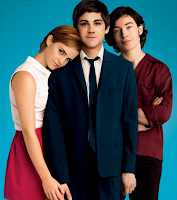The next major event takes place in the bathroom, it all felt very ominous and I had a feeling something bad would happen. The build up felt very real and when the girl is shot I was really shocked but even more surprised once we see Max then reverse time.
Back to the classroom and I was even more puzzled, much like the antagonist. After learning I could rewind time I knew that this game had a lot in store. Once having saved the girl I felt relieved and excited for the adventure and story that would follow now Max knew the power she possessed.
Then came humiliating the 'bad guy', but this time you are given a choice and I am the worst at making decisions so this stressed me out a little bit, knowing that my choice would effect the story somehow. However it was really fun and satisfying choosing to pour paint on Victoria


















